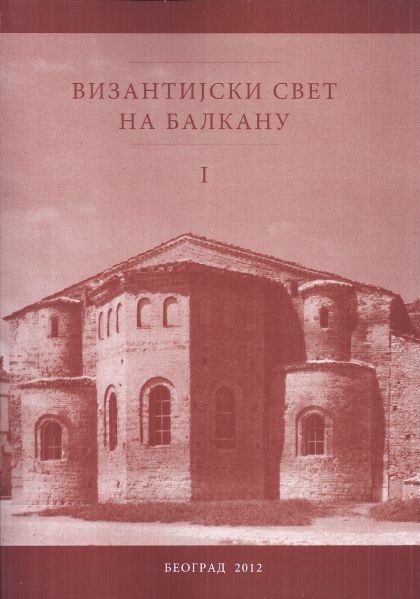Архиепископ Лав - творац иконографског програма фресака у Светој Софији Охридској
Archbishop Leo — The Creator of the Iconographic Fresco Program in Saint Sophia in Ohrid
Author(s): Branislav Todić
Subject(s): Cultural history, 6th to 12th Centuries, Eastern Orthodoxy
Published by: Vizantološki institut SANU
Summary/Abstract: The church of Saint Sophia in Ohrid was built by Archbishop Leo (1037–1056), “the first of the Greek” since the founding of the Archbishopric of Ohrid (1019), on the site of an older church. On the model of the cathedral church of the Patriarchate of Constantinople, he dedicated the church to St. Sophia, and its chapels to the Forty Martyrs of Sebaste, Saint John the Baptist and the Holy Apostles, whose relics are kept in their Constantinople church. No doubt, the painters were brought from the capital, as well; certain scenes distinctive of Constantinople art were also painted in St. Sophia, again probably by the intervention of Archbishop Leo. His imprint is most perceptible in the decoration of the sanctuary. Certain dogmatic-liturgical themes are presented there, whose iconography coincides for the most part with Leo’s viewpoints expressed between 1052 and 1054 in his epistles addressed to Bishop John of Trani, and also the entire Western clergy including the Pope. In his polemic with the West, the Archbishop of Ohrid drew mostly from the Pauline epistles and argued that leavened bread was the only true body of Christ, and as such needed to be used in the Eucharist. There is, therefore, very little doubt why the Eucharist should be painted in the apse of the church in Ohrid instead of the Communion of Apostles. This image contains subtle iconographic meanings, very closely related to the theological discussions of the time. Two scenes from the north wall are also connected to the Communion of Apostles: the Vision and the First Service of Saint Basil, depicting the origin of Byzantine liturgy. It stems from Christ and the Apostles, for it was Christ who inspired St. Basil to compose his Liturgy, which Basil himself served in the sanctuary immediately thereafter. It was probably Leo again who had the eminent Greek hierarchs gathered around St. Basil and St. John Chrysostom painted in the apse, along with several scenes from the Old Testament prefiguring the Incarnation and the New Testament service. There is no doubt that Archbishop Leo is to be further accredited with the representations of the great number of holy bishops and with their order. They served to assert the primacy of the Patriarchate of Constantinople which constituted the center of all the local Orthodox churches. This ideal image of Christian ecumenism also included the Western Church, which was represented by the images of Roman Popes honored by the Byzantine world. Furthermore, Leo accounted for the origin of his Archbishopric by the portraits of the popes Innocent and Vigilius who recognized the autocephaly of the Vicariate of Thessaloniki and Justiniana Prima, Church organisations preceding first the Bulgarian, and then the Archbishopric of Ohrid. The Bulgarian Church — the second component which led to the creation of the autocephaly of the Archbishopric of Ohrid — was presented in the Ohrid fresco-painting by the images of SS. Cyril and Clement, whereas the constitution of the Archbishopric of Ohrid was represented by the portrait of Patriarch Eusthatius (1019–1025), during whose time the Archbishopric was established. Taking all of this into account, one should regard Archbishop Leo as the real creator of the fresco programme in St. Sophia in Ohrid: he authorized it, but also propagated certain themes which he found particularly important. Those were associated with liturgy, the issue of communion bread, the relationship between the Patriarchate of Constantinople and Rome, as well as with the autocephaly of the Archbishopric of Ohrid. The frescoes are permeated with references to the events at the time of the Great Schism, in which Archbishop Leo played one of the most important roles. Today, without the historical context it would be hard to understand the frescoes in Ohrid and their iconography. Therefore, the frescoes should be dated between the years 1052, the start of the polemic with Rome and 1056, the passing of Archbishop Leo. In his cathedral church, he not only created a first-rate work of art, but also an artwork which marks the threshold of a new era in Byzantine art after 1054.
Book: Византијски свет на Балкану I-II
- Page Range: 119-142
- Page Count: 24
- Publication Year: 2012
- Language: Serbian
- Content File-PDF

